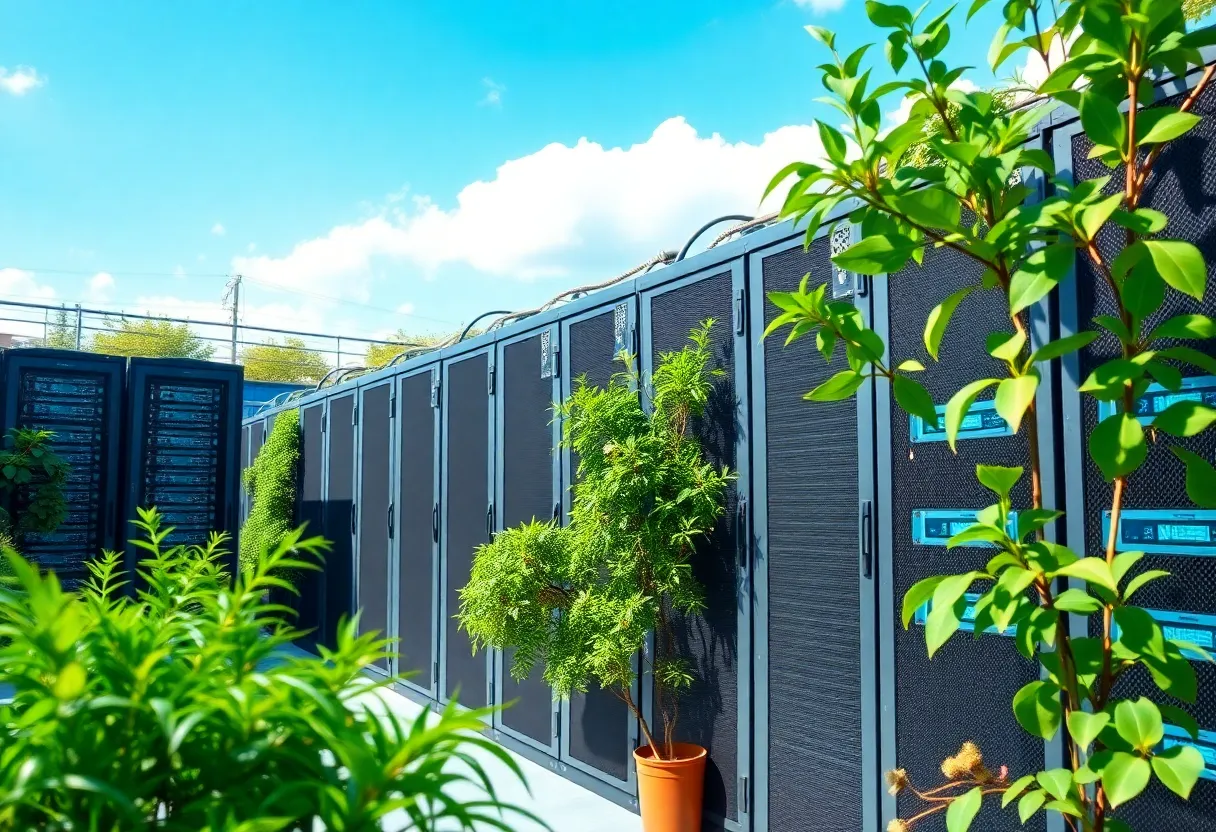California, September 28, 2025
News Summary
California lawmakers have struggled to implement stricter regulations on data centers after nine months of deliberation, resulting in significant compromises. Only two out of four proposed bills reached Governor Gavin Newsom, both diluted from their original intentions. Senate Bill 57 mandates water usage disclosure, but limits public access to that information, while Assembly Bill 93 requires data centers to inform water suppliers of their estimated consumption. Concerns over the environmental impact of data centers continue to rise, as they contribute to increased water and electricity demands in a drought-prone state.
California lawmakers’ efforts to impose stricter regulations on data centers have stalled after nine months with significant compromises to proposed legislation aimed at protecting the environment and utility ratepayers. Out of four proposed bills, only two have reached Governor Gavin Newsom’s desk, and these versions have been notably weakened from their original intentions.
The two unsuccessful bills that failed to progress in the Legislature included one that would have mandated data centers disclose their power usage and another aimed at incentivizing the adoption of cleaner energy practices within these facilities. The bills that did make it through include Senate Bill 57 and Assembly Bill 93, but they have been altered from their initial goals.
Senate Bill 57 requires data center operators to disclose their water usage but makes this information less accessible to the public, thus reducing transparency. Assembly Bill 93, on the other hand, requires data centers to inform water suppliers of their estimated water consumption during business license applications or renewals, promoting water use efficiency guidelines.
Data centers have become a focal point in public policy debates due to their integral role in storing and transmitting internet content, particularly with the growth of platforms like TikTok and Amazon. The increasing demand for artificial intelligence (AI), especially systems such as ChatGPT, has led to a surge in new data centers which, in turn, has raised concerns about their environmental footprint.
The proliferation of data centers necessitates heightened water consumption for cooling components, leading to worries about stress on local water reservoirs and the potential for increased electricity costs for residential customers. California, which already hosts one of the world’s largest concentrations of data centers, is responding to a reported 40% increase in hookup requests from Pacific Gas and Electric (PG&E).
In July, the California Public Utilities Commission streamlined the project application process for data centers, further facilitating their expansion. However, amendments to Senate Bill 57 have shifted its focus away from protecting energy customers from the infrastructure costs associated with data centers, merely requiring an assessment of potential cost shifts to other customers.
Concerns regarding the environmental impact of data centers are particularly pressing in California, a drought-prone state. A Stanford study identified California as a prime location for future data center projects, especially in regions already experiencing high water stress. Environmental advocates argue that the lack of transparency around data center water usage impedes community understanding and the ability to contest such developments.
Critics assert that the current legislative proposals have been diluted to favor the interests of data center operators, compromising public access to vital water usage data. The growing electricity demands from expanding data centers pose challenges for California’s power grid, with projections indicating that by 2030, the energy demand from these facilities could be equivalent to the power needs of millions of homes.
Local communities are increasingly engaging in discussions about the environmental consequences of data centers, emphasizing the need for transparency and equitable planning. The expansion of data centers has ignited conflicts over issues related to water consumption, air quality, and electricity loads, raising potential public health concerns. Additionally, the use of diesel generators in these facilities generates greenhouse gas emissions, complicating the already polarized dialogue between technology advocates and environmentalists regarding the balance between infrastructure expansion and climate goals.
Experts suggest that innovative approaches within the data center industry are required to maintain equilibrium amidst the rising demand for power and resources facing California in its changing climate.
Frequently Asked Questions (FAQ)
What did California lawmakers hope to achieve with data center regulations?
California lawmakers began the year indicating a desire to impose stricter regulations on data centers to protect the environment and electricity ratepayers.
How many of the proposed data center bills advanced?
After nine months, only two out of four proposed data center bills are currently on Governor Gavin Newsom’s desk, and those have been significantly weakened.
What happened to two of the proposed data center bills?
Two bills failed to progress in the Legislature: One would have required data centers to disclose their power usage, while another sought to incentivize data centers to adopt cleaner energy practices.
What do the current bills include?
Senate Bill 57 mandates water use disclosure by data center operators but allows the information to be less accessible to the public. Assembly Bill 93 requires data centers to inform water suppliers of their estimated water consumption during business license applications or renewals and encourages the development of water use efficiency guidelines.
Why are data centers a public policy concern?
Data centers are increasingly seen as a public policy concern due to their role in storing and transmitting content on the internet, linked to platforms like TikTok and Amazon.
What are the environmental concerns regarding data centers in California?
Concerns regarding data center water use are heightened in drought-prone California, with increased data centers leading to higher demands for water to cool components like semiconductors, raising worries over water reservoir stress and potentially higher electricity costs for residential customers.
Key Features of Data Center Regulations in California
| Feature | Details |
|---|---|
| Initial Legislative Intent | Stricter regulations to protect environment and utility ratepayers. |
| Proposed Bills | Four proposed bills; only two reached the governor. |
| Current Bills | Senate Bill 57 and Assembly Bill 93. |
| Senate Bill 57 | Mandates water use disclosure, less public accessibility. |
| Assembly Bill 93 | Requires disclosure of estimated water consumption to suppliers. |
| Environmental Impact Concerns | Increased water consumption, strain on resources, electricity demands. |
| Community Involvement | Local governments are discussing transparency and equity. |
Deeper Dive: News & Info About This Topic
- Los Angeles Times: California Legislature Passes Two Watered-Down Bills to Regulate Data Center Water Use, Energy Costs
- Wikipedia: Data Center
- Power Engineering: Why Surging California Data Center Growth Will Actually Bring Customer Bills Down
- Encyclopedia Britannica: Data Center
- Capital & Main: As California AI Data Centers Grow, So Does Dirty Energy
- Google Search: Data Centers California

Author: STAFF HERE SAN DIEGO WRITER
The SAN DIEGO STAFF WRITER represents the experienced team at HERESanDiego.com, your go-to source for actionable local news and information in San Diego, San Diego County, and beyond. Specializing in "news you can use," we cover essential topics like product reviews for personal and business needs, local business directories, politics, real estate trends, neighborhood insights, and state news affecting the area—with deep expertise drawn from years of dedicated reporting and strong community input, including local press releases and business updates. We deliver top reporting on high-value events such as Comic-Con International, San Diego County Fair, and San Diego Pride Festival. Our coverage extends to key organizations like the San Diego Regional Chamber of Commerce and United Way of San Diego County, plus leading businesses in biotechnology, healthcare, and technology that power the local economy such as Qualcomm, Illumina, and Scripps Health. As part of the broader HERE network, including HEREAnaheim.com, HEREBeverlyHills.com, HERECostaMesa.com, HERECoronado.com, HEREHollywood.com, HEREHuntingtonBeach.com, HERELongBeach.com, HERELosAngeles.com, HEREMissionViejo.com, and HERESantaAna.com, we provide comprehensive, credible insights into California's dynamic landscape.





